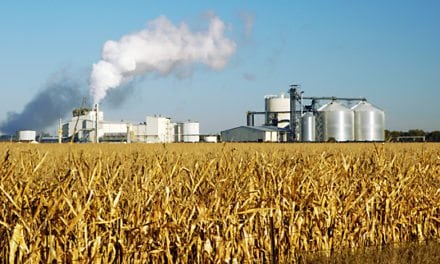Oil Markets Nearing Balance
- Winter weather expectations grow cold
- U.S. petroleum supply/demand balance improving
- Excess supplies largely in crude oil and distillates
- EIA projects propane demand higher; production lower
Alan Levine—Chairman, Powerhouse
(202) 333-5380

The Matrix
The week ending October 9, 2020, had plenty of market-moving news. Expectations grew for a winter colder than earlier forecasts had been. Data from the Energy Information Administration showed further “rebalancing” of U.S. oil supply and demand. Looking further ahead, OPEC now believes that demand for petroleum will peak in the 2030s – and may start to experience demand shrinkage at that time.
Winter Weather
Powerhouse’s Weekly Energy Market Situation (August 24, 2020) reported that the Old Farmer’s Almanac expected that winter would not be extremely cold. Subsequently, NOAA identified current weather as part of a La Nina, a cold-producing event.
Now, the Farmer’s Almanac, another ancient publication, (It’s been around since 1818) offers its own assessment of upcoming weather: The rest of the fall season will see successive pushes of stormy, progressively colder air masses. Overall, the Almanac calls for cold and snowy in the north, and drought in the west.
The rest of the fall season will see successive pushes of stormy, progressively colder air masses.
The weekly U.S. energy supply/demand report from the EIA showed growing balance in both sides of the equation. Current supply levels of crude oil and petroleum products have fallen in the past couple of months, showing declines in 10 out of 11 weeks since mid-July. Stocks fell by 56 million barrels, reversing inventory gains that followed a demand loss in the Covid-19 era.
Reductions in supply were felt all through petroleum stocks. The remaining excess, (measured against the five-year average) has been in crude oil and distillate stocks. Refineries are running at 77.1 of capacity. Lower prices and lesser demand have caused refiners to reign in product output.
OPEC is more upbeat on price. The group, in an official report, expects near-term demand to recover by 2022 to levels even higher than pre-Covid.
The U.S. Energy Information Administration (EIA) has issued an analysis of propane for the heating months October through March. The agency anticipates higher consumption and lower domestic output of propane.
For the winter season 2020-21:
- Consumption of 1.13 million barrels per day (year-on-year gain of 50,000 barrels daily)
- Production of 1.56 million barrels daily (year-on-year decline of 144,000 barrels per day.)
Increased heating demand “should more than offset reduced demand for propane as a petrochemical feedstock. Propane is also used as a fuel for drying agricultural crops early in the heating season. EIA expects grain drying demand to fall lower than last year’s level because corn crop maturity is on track with the five-year average and harvested grain moisture content will be lower than last year, requiring less drying in commercial grain dryers.”
Supply/Demand Balances
Supply/demand data in the United States for the week ending October 2, 2020, were released by the Energy Information Administration.
Total commercial stocks of petroleum fell by 2.0 million barrels during the week ended Oct. 2, 2020.
Commercial crude oil supplies in the United States increased by 0.5 million barrels from the previous report week to 492.9 million barrels.
Crude oil inventory changes by PAD District:
PADD 1: Fell 0.3 million barrels to 10.7 million barrels
PADD 2: Fell 0.6 million barrels to 142.7 million barrels
PADD 3: Fell 2.0 million barrels to 261.5 million barrels
PADD 4: Plus 0.3 million barrels to 23.4 million barrels
PADD 5: Plus 2.2 million barrels to 54.0 million barrels
Cushing, Oklahoma inventories were up 0.4 million barrels from the previous report week to 56.5 million barrels.
Domestic crude oil production rose 300,000 barrels per day to 11.0 million barrels daily.
Crude oil imports averaged 5.732 million barrels per day, a daily increase of 610,000 barrels. Exports decreased 853,000 barrels daily to 2.659 million barrels per day.
Refineries used 75.8% of capacity, up 2.3% from the previous report week.
Crude oil inputs to refineries increased 183,000 barrels daily; there were 13.853 million barrels per day of crude oil run to facilities. Gross inputs, which include blending stocks, rose 243,000 barrels daily to reach 14.362 million barrels daily.
Total petroleum product inventories fell 2.5 million barrels from the previous report week.
Gasoline stocks decreased 1.4 million barrels daily from the previous report week; total stocks are 226.7 million barrels.
Demand for gasoline rose 367,000 barrels per day to 8.896 million barrels per day.
Total product demand increased 898,000 barrels daily to 18.345 million barrels per day.
Distillate fuel oil stocks decreased 1.0 million barrels from the previous report week; distillate stocks are at 171.8 million barrels. EIA reported national distillate demand at 3.868 million barrels per day during the report week, an increase of 214,000 barrels daily.
Propane stocks decreased 0.1 million barrels from the previous report week; propane stocks are 101.8 million barrels. The report estimated current demand at 1.199 million barrels per day, an increase of 585,000 barrels daily from the previous report week.
Natural Gas
According to the EIA:
The net injections [of natural gas] into storage totaled 75 Bcf for the week ending October 2, compared with the five-year (2015–19) average net injections of 86 Bcf and last year’s net injections of 102 Bcf during the same week. Working natural gas stocks totaled 3,831 Bcf, which is 394 Bcf more than the five-year average and 444 Bcf more than last year at this time.
The average rate of injections into storage is 5% higher than the five-year average so far in the refill season (April through October). If the rate of injections into storage matched the five-year average of 9.9 Bcf/d for the remainder of the refill season, the total inventory would be 4,117 Bcf on October 31, which is 394 Bcf higher than the five-year average of 3,723 Bcf for that time of year.
Was this helpful? We’d like your feedback.
Please respond to [email protected]
Powerhouse Futures & Trading Disclaimer
Copyright 2020 Powerhouse Brokerage, LLC, All rights reserved










